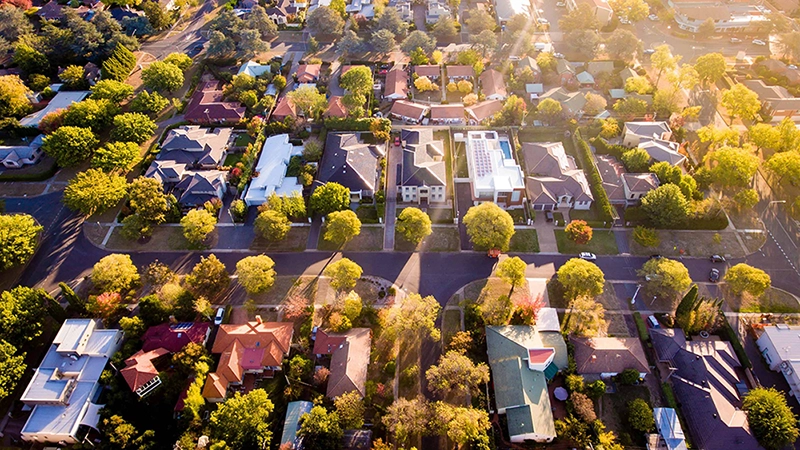Updated: 09 May, 2025
In November 2024, CoreLogic’s Home Value Index (HVI) rose by a mere 0.1%, marking the weakest monthly growth since January 2023. This tepid increase, the 22nd consecutive month of gains, points to a market that has run out of steam. Economic headwinds, mounting affordability obstacles, and increasing stock levels are curbing momentum nationwide.
Here’s CoreLogic’s report in full.
State Performance Overview
November’s housing market result highlights sharp contrasts among states. Perth led the nation, but its growth has halved compared with earlier quarters, signaling a broader slowdown. Sydney and Melbourne are sliding, driven by affordability pressures and increasing supply, while Brisbane and Adelaide are cooling after prolonged growth periods.
| State/City | November HVI Change (%) | Description |
|---|---|---|
| Sydney | -0.2 | Sydney’s housing values have been falling since August. Higher stock levels and declining buyer demand are driving the downturn. |
| Melbourne | -0.4 | Melbourne recorded one of the weakest annual performances. With 10 out of the past 12 months seeing declines, affordability constraints and buyer caution are weighing heavily. |
| Brisbane | +0.6 | Brisbane’s growth has slowed considerably. Quarterly gains of 1.8% are the lowest since March 2023, reflecting a cooling market after strong early-year growth. |
| Adelaide | +0.8 | Adelaide remains resilient but is seeing the slowest gains since mid-2023, driven by affordability limits and a plateauing market. |
| Perth | +1.1 | Despite leading national growth, Perth’s quarterly increase is its softest since April 2023. Rising stock levels (+33% since winter) could temper future performance. |
| Hobart | -0.1 | Hobart continues to underperform, reflecting weaker demand and declining investor interest. |
| Darwin | +0.2 | Darwin shows signs of stabilisation, but buyer activity remains muted, keeping price growth minimal. |
| Canberra | +0.1 | Canberra’s performance is reflective of national trends, with slow growth and rising stock levels cooling the market. |
Regional Markets Vs. Capital Cities
The desire for inexpensive housing and lifestyle-oriented houses is driving regional markets to outperform capital cities, even as the broader housing market struggles with a slump. Over the last three months, the capitals showed a modest 0.3% growth, while the aggregate regional index increased 1.1%. The strong demand for reasonably priced housing and beach lifestyle assets propelled regional Western Australia to a remarkable +3.3% quarterly rise.
Rental Market Overview
The rental market, once characterised by double-digit annual growth, is now also showing signs of easing. November rents increased by only 0.2%, bringing annual growth to 5.3%, the slowest rate since April 2021.
Perth continues to lead the capitals in rental growth, with house rents climbing 8.7% and unit rents increasing 9.7% annually. However, the pace of gains in Perth and other markets has softened from earlier highs. Meanwhile, Sydney and Brisbane experienced slight rental declines, indicative of affordability limits and reduced tenant mobility. Gross rental yields have held steady at 3.7%, with Darwin offering the highest returns at 6.8%, while Sydney lags at just 3.0%.
This shift in the rental market suggests that the post-pandemic rental boom has largely run its course.
Market Activity and Selling Conditions
The spring season included a big rise in stock levels, with national listings increasing by 16% since winter. Perth and Adelaide led this surge, recording jumps of 33% and 25%, respectively. However, these increases come from historically low bases, and total listings in these cities remain below long-term averages. In contrast, Sydney and Melbourne experienced more pronounced supply pressures, with listings now sitting 10.4% and 9.1% above their respective five-year averages.
The uptick in stock levels signals a market rebalancing as vendors respond to cooling demand. With auction clearance rates staying below 60% since mid-October, buyer confidence has waned, and sellers are now adjusting expectations and adopting flexible pricing to close deals.
Market Forecast
The housing market’s trajectory for 2025 will be shaped by a combination of macroeconomic pressures, affordability constraints, and shifting policy landscapes. Here’s what to expect:
- Affordability Barriers: Without substantial wage growth or a sharp decline in housing prices, affordability will remain a key constraint on market activity.
- Interest Rate Trajectory: Anticipated interest rate cuts in mid-2025, projected by financial markets and economists, may offer modest relief. However, with core inflation remaining stubbornly high, early rate reductions appear less likely.
- Geopolitical And Economic Headwinds: Global conflicts and geopolitical uncertainties, including potential political changes and federal election dynamics, add layers of unpredictability to the market.
- Structural Market Adjustments: The market enters 2025 with weakening growth and rising stock levels, shaping a transitional phase. Regional and mid-sized markets may offer pockets of resilience, but the overall environment reflects a shift toward equilibrium rather than a large expansion.









